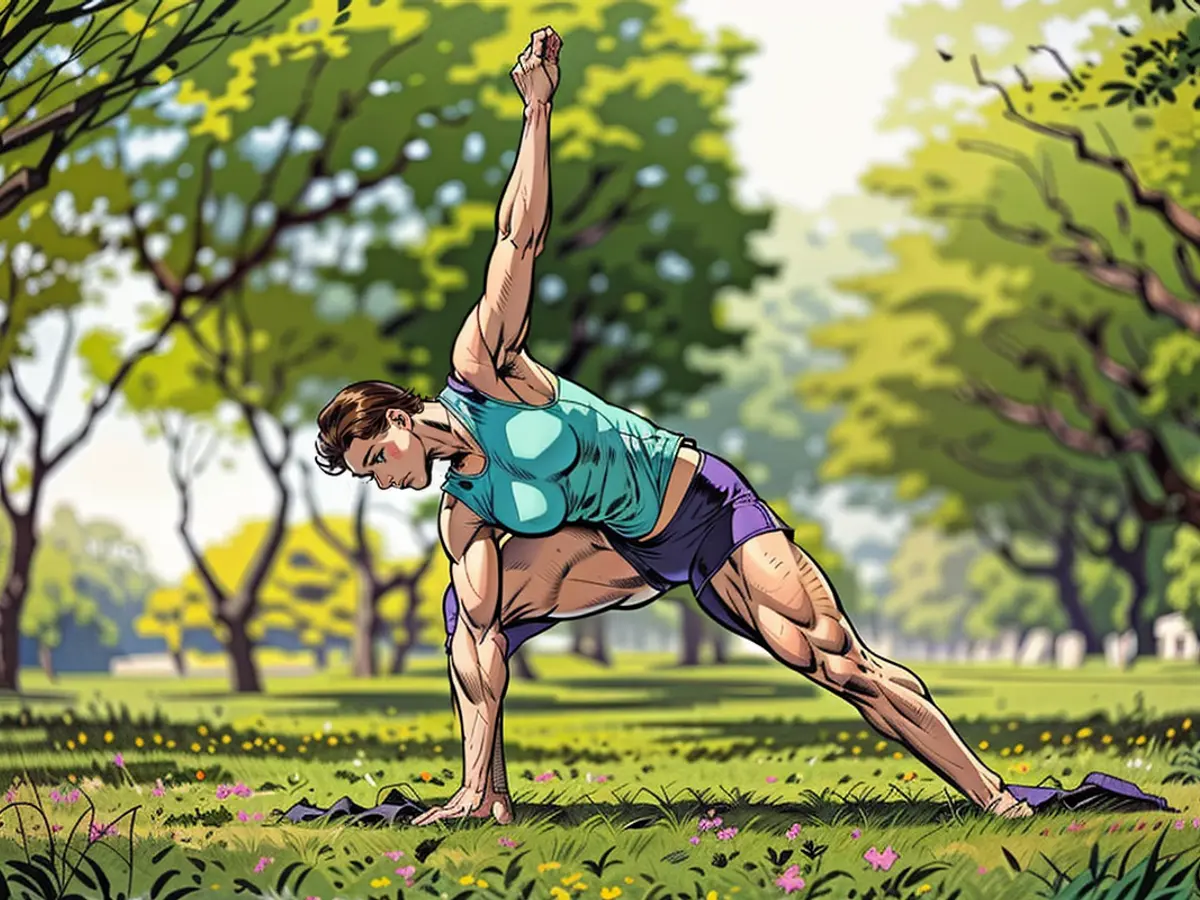You don’t have to be an Olympian to be flexible. Here’s how
Regardless of the odds of reaching Olympic-level capability, one thing everyone can do is increase their flexibility — or how much you can stretch or elongate your muscles without causing any damage, said Dr. Ashley Cruz, owner and founder of Cruz Chiropractic Wellness in New York City.
“Our muscles are what pull our bones and move us at our joints,” Cruz added. “It’s basically a necessity for every movement in our body to have some type of flexibility and also elasticity, which is to return that muscle to its normal resting state after it stretches.”
A common reason for wanting to be more flexible is to prevent injury, which also requires building and maintaining muscle mass through strength training, Cruz said. Reducing your risk of getting hurt is especially important as you age. Flexibility declines due to a decrease in collagen production — making an action such as slipping on a sidewalk or bending down to pick up something you dropped more problematic than when you’re younger. Becoming more flexible as an older adult is still doable, but collagen loss means it’s also harder to achieve.
If you abruptly make a movement your body’s unfamiliar with, your body registers “that movement as a red flag and can create some type of injury because of that,” Cruz said.
Increasing flexibility — generally by stretching — happens by way of neuromuscular reeducation, the process of nerves in the brain and spinal cord sending messages to muscles to perform the movements, Cruz said.
The more you do those movements, she added, the more your nervous system can develop a clear pathway to knowing you can do them safely without repercussions.
There are also more fun reasons some people desire more flexibility, such as being better able to play with young kids or do cool tricks such as splits. Others want to improve flexibility for sex, allowing for more variety and injury prevention.

“The good news for people who are just getting into this is that you don’t necessarily need special equipment,” said Dr. Rachelle Reed, an exercise physiologist in Athens, Georgia. “You don’t need weights, you don’t need a treadmill. It really is something that you can do with just your own body.”
Here are some stretches and lifestyle habits that can help you become more flexible, mistakes to avoid and other ways flexibility can benefit your overall health.
Stretch yourself loose
The stretches experts recommend for flexibility can depend on personal needs, but they do have some suggestions for full-body flexibility.
Stretches for hip flexors, including the cat-cow yoga pose and compound stretches that target multiple muscle groups, are especially helpful for people with desk jobs, experts said.
To do the cat-cow stretch, kneel on a floor mat or carpeted floor. On all fours, place your palms directly underneath your shoulders and your hips over your knees. Breathe in while arching your back downward, bringing your stomach toward the floor as you look forward and pull your shoulders back to stretch the chest. Exhale as you move your spine upward, pulling the navel in toward the spine and rounding the spine up toward the ceiling.

This breathing bridge exercise is another move that can open up your hips.
Posterior chain stretches increase the flexibility of your glutes and hamstrings. Those include the “figure-4 stretch” and downward dog, which you can do by starting on your hands and knees with your hands slightly ahead of your shoulders and your hips directly above your knees.
“Turn your toes under and exhale as you lift your knees, engaging your quadriceps (muscles of the front of your legs) to begin straightening your legs while bringing your pelvis up and back to create an A-frame shape with your body,” wrote certified strength and conditioning specialist Dana Santas in a previous CNN article. “Use your midback muscles to pull your shoulder blades toward your waist, broadening your upper back and lengthening your spine.”
The groin and pelvic floor areas are chronically tight for many people, Cruz said. To alleviate this, try happy baby pose — lying on a mat or carpeted floor, bring your knees, slightly widened, in toward your chest and up to your armpits while gripping your feet and keeping your back on the ground.
Thoracic rotational stretches or exercisesare important for movements that require twisting your midback, such as backing out of a driveway, Cruz said. The open book stretch involves lying on your side and twisting and opening your back so your back is lying as flat as possible on the mat while your hips are still turned to the side.
You should stretch at least a few times per week, but daily is most effective, experts said. If you’re a beginner, performing these stretches dynamically may be best — that’s when you’re actively moving your body through a range of motion instead of statically, which involves getting into a position and holding it still for the duration, Reed said.
Stretches should be held for 15 to 30 seconds, and you can sprinkle in stretches throughout your day by taking a break from work every 45 minutes, or try 20-minute sessions, experts said. Feelings of pulling, lengthening, warmth or tension are normal, but pain or burning are signs you’re going too far.
How long getting significantly more flexible takes can vary depending on your general physical activity levels, nutrition, hydration and rest, experts said. But you can feel results in as little as a week or two if you’re not pushing yourself too far or neglecting other health basics, Cruz said.
Other pros of pliability
As you’re working your way to a more flexible body, you may find stretching produces even more payoffs than just the flexibility itself. Stress relief is one of the biggest benefits of stretching, experts said.
Those moments of slowing down to stretch and connect to your body in the moment can also develop a better sense of body awareness, Reed and Cruz said.
Movement also improves blood flow, which increases oxygen — another calming agent — and helps create more collagen, Cruz said. Stretching, moving or exercising also increases lymphatic flow, “detoxing our blood system because lymphatic flow is dependent on movement,” she added.
Greater flexibility can also provide better posture and balance. It’s also good for helping you feel less pain during exercise and improve your ability to build muscle, since you need muscle length to have strength, Cruz said.
Maintaining flexibility is essential for overall health and wellness, as it reduces the risk of injuries, especially as you age. This is achieved through regular stretching, which promotes neuromuscular reeducation, allowing your nervous system to develop a clear pathway for safe movements.
Incorporating flexibility exercises into your daily routine can have numerous benefits, such as reducing stress, improving body awareness, enhancing blood flow, and boosting collagen production. For example, a breathing bridge exercise can help open up your hips, while the happy baby pose targets the groin and pelvic floor areas. By following these exercises and making stretching a regular part of your lifestyle, you can significantly improve your flexibility for better health and wellness.








